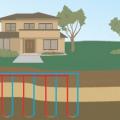What is the ideal option? Types of heating systems, their advantages
You are viewing the section Types, located in the large section Heating.
Subsections: Geothermal.

A heating system is a set of devices and elements that provide heating of the air inside a room.
Typically, there are three devices operating in the system.: heater, heat transmitters (pipes, wires or other connecting elements) and emitters. The system also includes the so-called coolant.
Heating can be water, air, electric, gas, infrared, solar and geothermal.
Content
What types of heating are there?
Below are the types of heating that most common currently.
Water
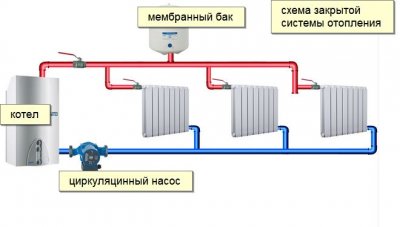
In such systems heat is transferred by heated water. It is heated in the boiler room, in the furnace or the boiler. From there it goes into the pipes and radiators, which heat up and radiate heat into the rooms.
It is possible to heat a house without radiators. A similar method is used in small private houses. In this case The role of the emitter is performed by pipes.
Another option for water heating without batteries is water heated floorIn this system, water pipes are concreted into the floor. The heat from their radiation is accumulated in the concrete screed, which radiates it into the surrounding space.
In a system of warm floors, water does not move well on its own, which is due to the horizontal arrangement of pipes. Therefore, a circulation pump.
Important! Hydronic heating can be highly efficient or uneven, depending on the pipe layout. Uniform heating of all rooms is achieved with a collector circuit. Less uniform heating - with one-pipe and two-pipe systems, when water moves from one room to another sequentially.
Advantages of the system water heating:
- The heating device can operate on any energy source: wood, coal, gas, electricity or accumulated solar energy. Several different boilers can be installed in the system, operating on different types of fuel.
- If the heating system is properly arranged, the coolant (water) moves on its own. The exceptions are water heated floors and oil liquid systems. In oil systems, the coolant has low fluidity, so it moves slowly and also requires the operation of a circulation pump.
If there is no heating, the water in the pipes may cool down and freeze. This will require further dismantling, disassembling pipes, batteries. If the house is not intended for permanent residence, it is necessary to drain the water or fill the system with a special antifreeze, technical oil.
Air
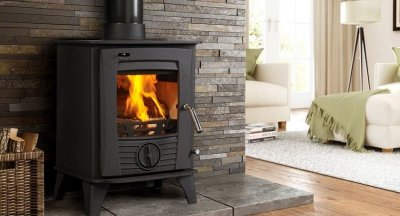
This is one of the old ways of heating a house, in which the heat from the heated oven is used. The walls and air ducts of the stove are heated by burning wood and coal inside. After that, the heat goes into the surrounding space.
The main heating is carried out by means of furnace air passages - air ductsThey are laid in the central interior wall of the room.
By laying the chimney in the floor of the room and placing the stove in the basement, you can get construction of heated floors on coal or wood. Another option is to install a heater in the furnace to heat the walls and air ducts. gas injectors. Thus, air heating can also operate on various energy sources, solid and gaseous fuels.
Advantages of air heating:
- Various types of energy sources are used: firewood, coal, pellets, sawn timber waste.
- The stove can be built from clay and bricks. Thus, air heating is the most inexpensive way to heat a house.
- This type of heating is suitable for heating systems in seasonal homes: in summer houses, in country cottages.
Flaws:
- It is necessary to be able to "heat" the stove, do not close the chimney damper until the wood has completely burned out, so as not to cause the accumulation of carbon monoxide and poisoning from them.
- The stove needs to be fired up, cleared of ash, and loaded with firewood. - this requires daily from 1-2 hours. The exception to the rule is solid fuel boilers of long burning, their loading chamber holds a lot of firewood. They also have higher operating efficiency due to complete combustion of the fuel.
Gas
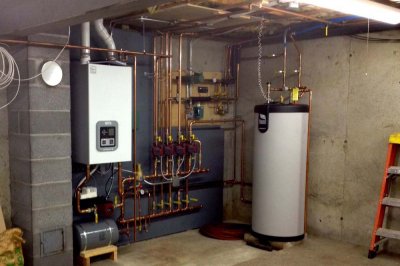
This is home heating using energy from burning gas. A device in which gas is burned is called a gas boiler.
Advantages:
- Possibility of automatic operation — the house will be heated without spending time every day cleaning the stove.
- Relative accessibility - gas is cheaper than electricity.
Flaws:
- To connect gas supply required.
- For installation of a gas boiler a separate room is needed.
- Periodic system checks are required. to detect possible gas leaks.
Electrical
One of the most expensive options for heating a home. In it the energy of heating the metal is used, which is formed in the wires when electric current passes through them. The released heat can be accumulated by a concrete screed, such a heating system is called electric underfloor heating, or accumulated by a liquid heat carrier, such heating is called electric water heating.
Another option is - installation of electric heaters. These are devices that generate heat.
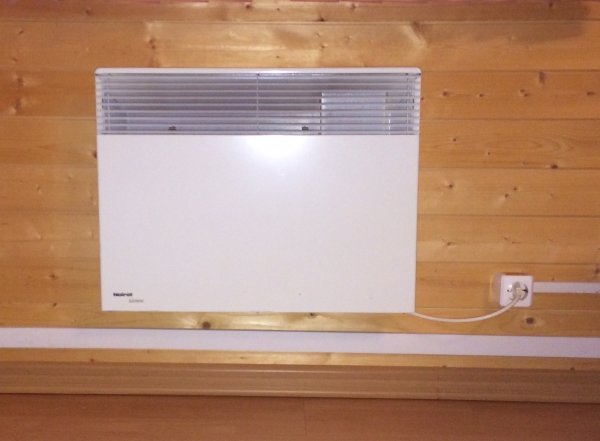
Photo 1. Electric heater installed on the wall. The device is connected to the socket.
Advantages of Electric Heating:
- Possibility of periodic operation, use in seasonal housing. At the same time, electric floors warm up quickly, and the room becomes warmer already. in 1-2 hours.
Flaws:
- High cost.
- To connect an electric boiler at home a new power supply project needs to be made, sometimes - to replace the wires on the street.
- In many villages and multi-storey buildings electrical wires are not designed for heavy loadsTherefore, with a large number of connections, the power supply system fails.
Infrared film floor
Infrared floor - one of the options for electric heating. It works from a socket. Film flooring is produced in the form of laminated panels, inside of which heating strips are built in. Carbon plates are soldered inside the strips, which emit infrared spectrum when electricity passes through them. The radiation of carbon elements heats objects inside the room.
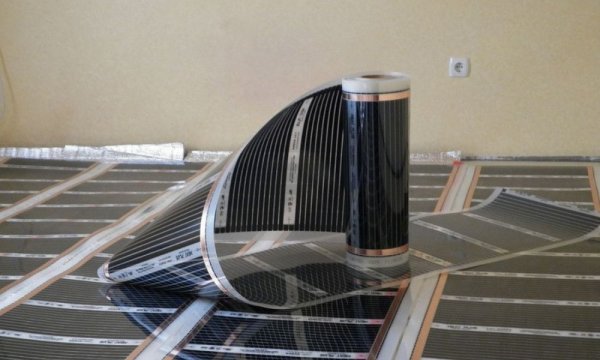
Photo 2. The process of installing an infrared floor. Laminate, parquet or linoleum is laid on top of it.
Advantages of film flooring:
- Convenience and ease of installation.
- No floor level rise, as when installing water or electric heated floors inside a concrete screed.
- Fast heating.
- If necessary the heating system can be dismantled and install it in another room.
Gas, air, water and even electric heating have long been the norm. However, there are innovative methods that few people in Russia have heard of. This heat pumps and solar collectors.
Heat pump and geothermal systems are the best in terms of eco-friendliness
Heat pumps are one of the most environmentally friendly types of heating systems. They are used to heat homes. use the energy of natural reservoirs, lowering their temperature by several degrees and at the same time taking some heat for themselves. This is how heat pumps accumulate thermal energy, which they then use to heat the house.
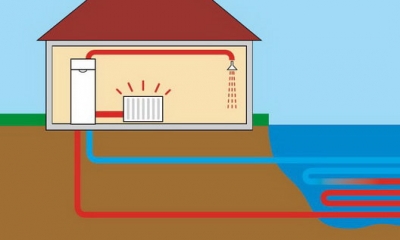
Heat pumps are divided into:
- On geothermal — operate on the energy of underground waters or take heat from the ground.
- On the air — take heat from the atmosphere.
- For secondary heat pumps — treat sewage.
The main advantage of heat pumps is their environmental friendliness. They do not create smoke, soot, do not emit carbon monoxide, do not harm nature and humans. Their disadvantage is high price.
Solar collectors are a modern heating option
Another type of heating that could be considered environmentally friendly if it were not for the batteries used with lead and electrolyte. Here is the energy for heating the house obtained through solar panels. These elements are installed on the roofs of buildings. When illuminated, they generate electrical energy, which is fed into the heating system. In essence, a solar collector is one of the types of electric heating of a house.
One of the main advantages of solar heating was considered to be heating the house without expenses. However, this is not entirely true. During operation, there is no need to spend money on gas, firewood, electricity. But the system itself and its installation require significant financial investments.
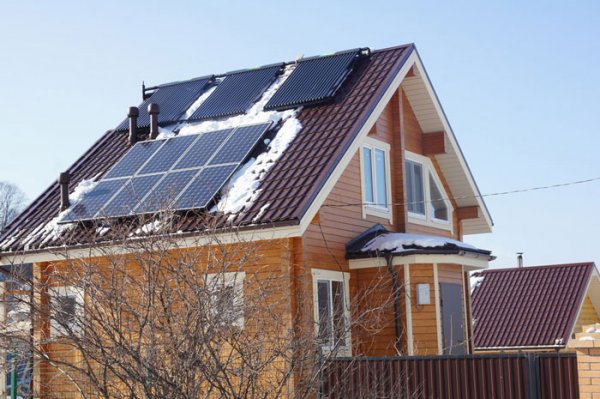
Photo 3. Solar collectors installed on the roof of the house. The devices should be positioned at an angle to best catch the sun's rays.
In addition, solar collectors and heating system elements are not eternalThey require periodic replacement and monetary expenses comparable to the cost of electric heating at home.
Combined heating: advantages and disadvantages, is it effective?
By combined heating we mean use of several heating boilers and different types of energy sources in one circuit. Thus, water in water heating radiators can be heated by a gas, coal or electric boiler.
The electric heating system of the house can be connected to the general system and additionally fed by solar collectors. Such a combination of different heat sources allows you to make autonomous heating of a private house uninterrupted, and also save on energy.
Industrial heating systems
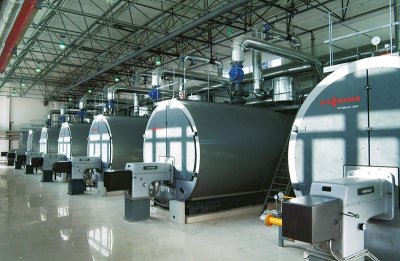
Industrial heating requires the use of powerful heating equipment and large amounts of energy.
Therefore, the issue of energy saving is acute in industrial heating of premises.
In an industrial organization, it is necessary to heat production areas Automatic valves and control devices are used.
Useful video
Watch a video comparing home heating systems using an electric, gas and wood boiler.
What types of heating systems are better
To choose the right heating for a private house, various factors must be taken into account: the cost of its installation, the reliability of operation of a particular heating system.
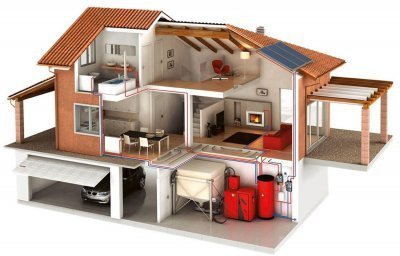
The best choice is a combination system, capable of heating a house from several different heat sources.
Selecting a heating system determined by the availability of energy resources. Any system can be installed in a private home. In multi-story buildings, a central heating system is often used, and additional electrical appliances are installed if necessary.





